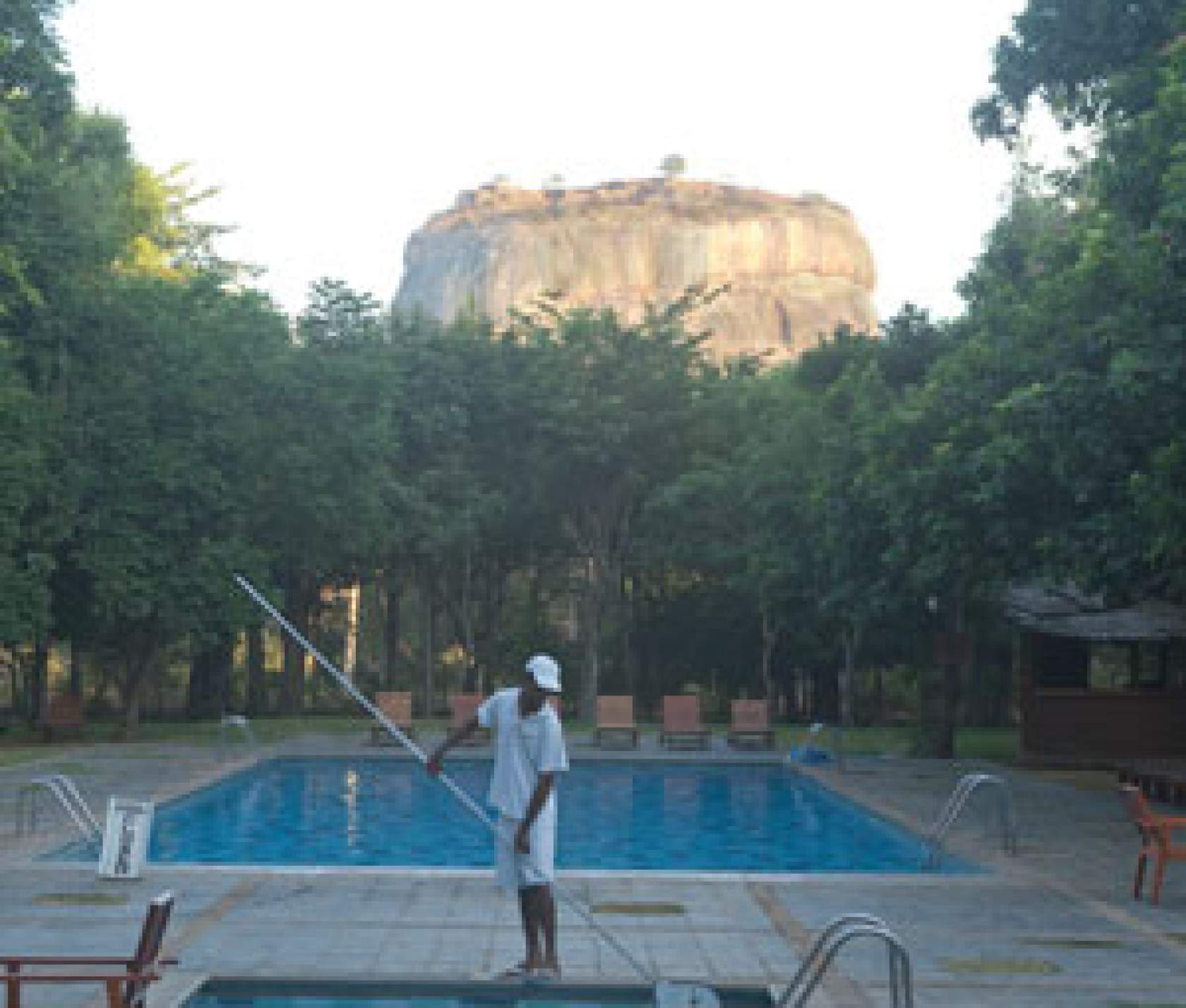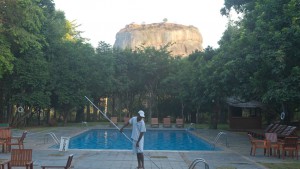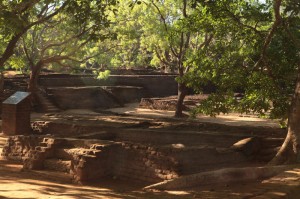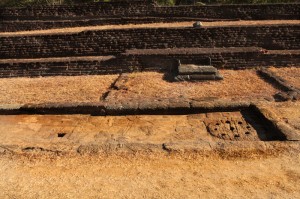Sigiriya: the world’s oldest landscaped water garden


Photos by Jack Maher
Sri Lanka's Sigiriya Rock is famous for its past, present and even future.
In the present, it is considered one of Sri Lanka’s Ancient Wonders. It attracts many thousands of tourists each year who enjoy the view following the 1202-step climb to the top, and often partake in wild elephant safaris in the adjacent national parks.
As for the future, Colombo-based speculative fiction writer Arthur C Clarke set the Rock as the location for his famous “space elevators” in Fountains of Paradise. That was his fantastic idea about transporting people and goods up to orbiting space stations via fixed 36,000km long elevators. It’s a strange idea that scientists now consider actually has some merit to enable cheaper space travel – a long time in the future, of course.
But the Rock’s main claim to fame is it history – including its place as home to nearly 100 swimming pools and ponds and an incredible series of fountains as part of the world’s oldest landscaped gardens.
The pools, fountains and gardens were built by King Kasyapa in the fifth century AD as part of his development of the Rock as a fortress: his Palace in the Sky. Having killed his father to assume the throne, he needed a place to protect himself from his vengeful brother. The fortress was surrounded by three rings of crocodile-infested moats, and was manned by guards who balanced on the edges of the rock – an automatic punishment if they fell asleep was to fall to their deaths.
But Kasyapa spent most of his time on the ground level, laying in resplendent bliss in his water garden, watching his 500 wives bath in the shadow of the Rock.
Not satisfied to merely watch his real wives – who hailed from all over Asia and even Africa – he also had detailed and colourful portraits of each of them painted on the side of the Rock. According to the ancient history found scribed next to the pictures, this was so he could see them in the reflection of his pools. The frescoes were painted on a highly polished, mirrored surface. The plaster topcoat was made from what at the time was a very advanced mixture of ground termite nest, ground rice and clay.
But his most amazing construction was the series of gravity-fed fountains, which was built using extremely sophisticated hydraulic technology considering it was 1600 years ago.

Water was manually moved to the top of the Rock where it was kept in large storage pools. When released it flowed down channels cut in rock and through clay pipes and brickwork conduits, then underground until it reached a series of circular limestone plates with symmetrical perforations.
The water then shot up several metres in the air, creating a Royal spectacle and cooling the hot Sri Lankan day.

Despite the obvious disrepair of most of the infrastructure, the fountains still work to a small degree during the wet season, when heavy rain will see them bubble up about one metre.
Unfortunately for King Kasyapa, his brother gained his revenge and defeated him in battle. According to varying versions of events, he then either took his own life or was poisoned by his Queen.
After his demise, Buddhist monks took over the Rock and turned it into a monastery. They destroyed most of the immodest images of Kaspaya’s wives, but couldn’t reach some that were in a cave in the side of the rock, where an inscription also tells the story of Kaspaya.
The Rock is a significant local landmark and can be viewed for many kilometres around.

It makes a highlight of the local Sigiriya Hotel, which like Kaspaya’s ancient home, boasts a series of pools at the centre of tranquil and beautiful garden. The main pool has a variegated pattern of blue, white and aqua 6 inch ceramic tiles. It uses locally made Centric equipment including two sand filters and two cast iron 5kW pumps made by the 107 year old company, Jinasena in Colombo Sri Lanka. There is also a 300mm deep wading pool/reflection pond to set the scene for Sigiriya rock. Both pools use chlorine sanitisation and soda ash for the pH.
This is an abridged version of an article that first appeared in the 85th printed edition SPLASH!




